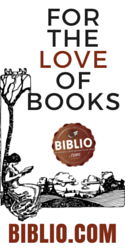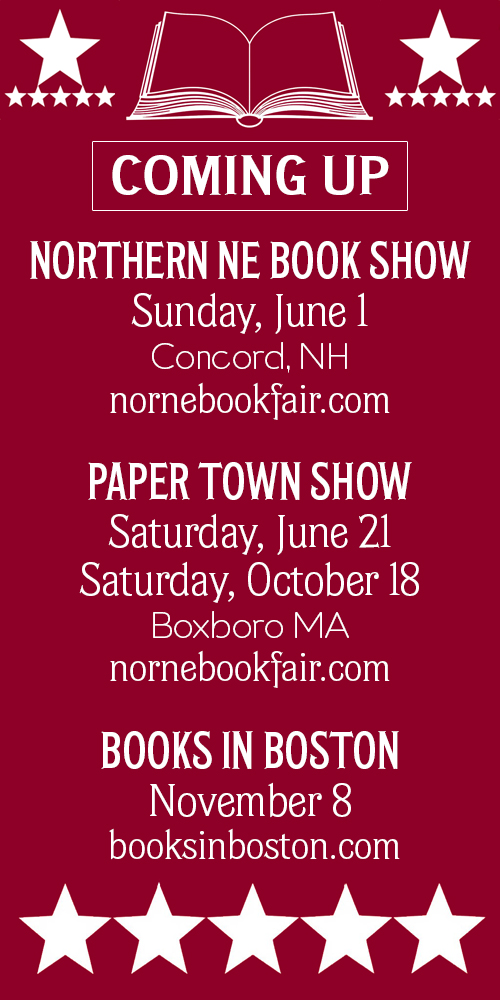That Strange and Wise Old Howl
In 2006, fifty years after its publication in Fall 1956, the City Lights paperback of Howl and Other Poems cost $6.95, up from its original price of 75 cents. Appearing much the same as it did half a century ago, the later copy is one of 965,000 in print. The poem was produced earlier in 25 mimeographed copies on May 16, 1956 as Howl for Carl Solomon. Author Allen Ginsberg paid for them to give free to friends. The Ahearns’ 1998 guide to values identifies this as the author’s first book with a mimeographed “first edition” valued at $15,000. Fame, acclaim, and angry condemnation hike prices.
All those copies meant, let’s hope, steady income the gay genius who wrote Howl could use in his lifelong struggle for social justice, world peace, ecological sanity, and spiritual uplifting as he waged a never-ending crusade against materialistic greed, political and military ruthlessness, conformity based on intolerance, and authoritarianism guided by prejudice.
With anniversary and other editions, the total must be over a million now (except for copies destroyed by the irate who viewed Ginsberg’s “emotional time bomb” as outrageous pornography making book burning a moral duty). Awesome figures for a poem — but then Howl shook and changed America, rescued poets from traditional forms, got the publisher, Ginsberg’s fellow poet Lawrence Ferlinghetti, arrested for circulating “obscene and indecent writings,” was called an “outlaw manifesto,” made student reading lists, yet to this day still can’t be used without censorship in many media.
[In 1957 when Howl was hauled into a San Francisco court by prudish “thought police,” prominent authors testified on its behalf, and Judge Clayton Horn, who taught Sunday school, freed Howl from charges of being “dirty,” quoting the Motto of the Order of the Garter in its defense: Honi soit qui mal y pense — Evil to him who evil thinks.]
Ezra Pound’s ABC of Reading states: “Literature is news that stays news.” How true of Howl! The explosive poem is, alas, as timely now, more so maybe, as it was in 1956. Poet and editor Robert Pinsky writes that Howl would be “sensational and challenging” if it came out new tomorrow. The first line, — “I saw the best minds of my generation destroyed by madness, starving hysterical naked” — still sets off echoes. Though recently, the application might be that if the best minds can’t be destroyed, lock them up. And keep the worst minds in service of power, endlessly ranting in their microphones.
Columbia and the Beats
Jack Kerouac made it official in 1948: “We’re a Beat generation.” Beat didn’t mean defeated. It meant getting off the rails of convention, going all the way, daring to be different, betting your all on anything but a sure thing. It was Howl, even more than Kerouac’s On the Road, that energized the Beat insurrection, liberated writers to flee the ordinary and conventional, fearlessly to reveal self, and to accept the terrors of being free.
Howl is more than fifty now, yet still a poem of youth, a poetic testament of youth’s defiance, indisputably innocent defiance. The poem might be viewed as an “executive summary” of On the Road, but more. Later Ginsberg would report he wrote Howl“for my own soul’s ear and a few other golden ears.”
In 1955, the year Ginsberg began writing Howl on a secondhand typewriter at 1010 Montgomery Street, San Francisco, I went where Kerouac and Ginsberg had launched their legends a few years before—Columbia University. They had moved on, but their teachers were present, and the West End Bar was still at Broadway near 114th Street.
There you could send the moon down the sky with fellow students, pundits, poets, and assorted, mostly lovable, oddballs. In my time, we too imbibed there, saved the world there, planned the creation of art there with, as Kerouac wrote, “Johnny the bartender looking over everybody’s heads with his big hands on the counter.” We too used the dining hall where Kerouac was a waiter and poured coffee for an “old geezer” pointed out to him as Thomas Mann. Columbia then was home and host for a remarkable roster of such “old geezers.”
For me, a busy decade, the 1950s. I served in a questionable war (Korea), left the Navy, and at midpoint headed for New York City and Columbia graduate school. I found a part-time job supervising examinations at a Manhattan law school where William Kunstler and Roy Cohn were simultaneously on the faculty and where poet LeRoi Jones, before he became Amri Baraka, dropped in as a proctor to earn rent money.
At Columbia I took and passed courses offered by historians Henry Steele Commager and Jacques Barzun, philosopher Ernest Nagel, anthropologist Margaret Mead. The lectures of Mark Van Doren, Lionel Trilling, Gilbert Highet, et al., were irresistible magnets. I was preparing for a lifetime of intellectual name-dropping. Thus I was there waiting in 1958 when Howl came to Columbia. Allen Ginsberg gave a reading at a campus theatre, and I squeezed in with the sellout crowd.
Listening to Poetry and Learning
Allen Ginsberg was born June 3, 1926 at Paterson, New Jersey. His father Louis taught, wrote poetry, and was a socialist. His mother Naomi was a communist from Russia who began a long history of hospitalization for mental problems when Allen was six.
He entered Columbia in 1942 and was suspended three years later for scrawling obscene insults on his dormitory window. One insult alleged physical shortcomings of the Columbia president. He joined the Merchant Marines in 1945 and returned to Columbia the following year. At Columbia, he first met Jack Kerouac, Neal Cassady, and William Burroughs. The three are the dedicatees of Howl. The dedication includes titles of their writings and Ginsberg’s claim: “All these books are published in Heaven.”
In 1949, Ginsberg was arrested for letting a friend leave stolen goods in his apartment, but he avoided prison by voluntarily spending eight months in the New York State Psychiatric Institute. That was a fateful decision. At the Institute, he met Carl Solomon, a leftist intellectual and mental patient, and discovered they were kindred spirits who shared an interest in avant-garde writers and ideas.
Carl Solomon inspired the writing of Howl. If Solomon, whom Ginsberg was convinced had one of the “best minds of my generation,” was mad, America did it to him. Thus evolved Howl for Carl Solomon, which ends with this sad and gentle message to Carl: “I’m with you in Rockland—in my dreams you walk dripping from a sea-journey on the highway across America in tears to the door of my cottage in the Western night.”
That line ending Howl spoke to me with special resonance since I had finished my own sea-journey involving the Navy and war and had landed in New York City where much of Howl is placed with fierce and farcical images that insist on being remembered.
When he read at Columbia in 1958, the author of Howl was past thirty, older than most of us in the mainly student audience, though not the faculty members who attended, who were curious to witness the return of Columbia’s increasingly celebrated and controversial rebel.
The poems impressed me as did the performance of Allen Ginsberg. His poetry including Howl virtually demands reading aloud. A few years younger, I was at the edge of Ginsberg’s generation and felt half-inclined to tell him, “Not this kid, Allen, they won’t destroy my mind. I dare ’em to try.” It was an era when anyone peculiar enough to think was “Beat.” And that night we were provoked into thinking.
The campus evening was certainly gripping and memorable, funny, angry, a recruiting session for the revolution ahead against status quo greed and imperial ambitions. Many of us signed up and are still waiting. “Hearing Allen Ginsberg read,” said poet Anne Waldman, “was an event in eternity.”
I didn’t, as others did, go up to meet and thank the poet. Should have. I was too shy or had a test next day or had a late night chow and chess session scheduled at the West End with Martin, the Polish-Jew neighbor of mine, on 114th Street who lived for chess and probably never heard of Howl. Even now, over half a century on, there are no doubt amazing numbers who don’t know the counterculture’s proto-poem and who are equally unfamiliar with its author, our gay, wise, weird in a nice way, exuberant, wandering Jesus of the 1950s and later.
Despite its notoriety, Howl seemed to me (and still does) a religious poem, in the sense that The Waste Land, Urizen, Paradise Lost, and The Hound of Heaven are religious poems. The pursuit of holiness is ubiquitous throughout and in the Footnote to Howl“The typewriter is holy the poem is holy the voice is holy the hearers are holy the ecstasy is holy!”
Stopping By a Campus on a Snowy Night
During the same period when I first attended an Allen Ginsberg reading—later a common occurrence for decades as Ginsberg tirelessly toured campuses and read his surprisingly young poems even as he aged—a Columbia bulletin board sent me south to the Washington Square campus of New York University. There on a city night, with snow “faintly falling through the universe” as in Dubliners, I heard a white-haired traditionalist, Robert Frost, read his “Stopping by Woods on a Snowy Evening” and other poems distinctly different from Howl, yet no less compelling. Beethoven and Louis Armstrong made music in different ways. We needn’t reject either. So too Frost and Ginsberg. Their readings in that time of the poets made me rejoice to live in the city and to share a rich season for verse. Just as the evolution defense lawyer at the close of Inherit the Wind puts the Bible and Darwin together, I’m inclined to bring and keep Ginsberg and Frost together. They can share a bookshelf when both have Library of America volumes, as Robert Frost already does. Where’s the harm. I treasure both.
For me though, Howl since my first encounter has been a special special. In part maybe because it fits in a shirt pocket and travels easily in case of sudden need for a poetry fix. Poetry should be portable, and Howl particularly lends itself to a fast draw for reading aloud to friends.
Roy Meador, a writer and book collector in Ann Arbor, Michigan, died on January 16, 2007. Roy was the coauthor with Marvin Mondlin of “Book Row”, their history of the bookshops that once flourished along Manhattan’s Fourth Avenue and the surrounding neighborhood.


























